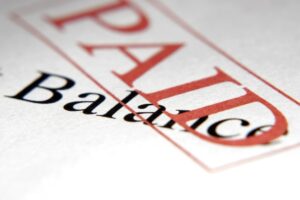Rightsizing Cash Flow and Breaking the Loan Cycle
For many businesses, cash flow is a constant concern. When outstanding invoices cause gaps in revenue, companies often turn to short-term loans to smooth out finances. Unfortunately, taking out loans can lead to much larger problems if businesses do not find a way to rightsize cash flow.

Recurring Cash Flow Issues
Cash flow strains can usually be traced back to unpaid receivables. Staggered payment schedules of 30 days or more can cause gaps in revenue, even if sales are high. Taking out a short-term loan can be a stopgap measure to smooth out irregular cycles, but those issues are recurring in most cases. In addition, businesses cannot predict when customers will pay their invoices, and occasionally, some payments are delinquent and go to collections. Short-term loans also place businesses in a financially unstable position, leaving them without any capital to act as a buffer in case there are unexpected costs, and forcing them to pass up lucrative opportunties with short windows in which to act.
The Loan Cycle
Taking out a single short-term loan places debt on the books and lowers credit ratings. The funds from the loan may temporarily rightsize cash flow, but a new problem is created. The business now needs more revenue to repay the loan’s balance. If irregular revenue cycles are recurring, then taking out additional short-term loans is a fast way to rack up debt, demolish credit ratings, and create a hole that is almost impossible to escape. This is the loan cycle, and it can be a very dangerous trap for businesses, regardless of size. Many businesses end up bankrupt from constantly borrowing against cash flow to smooth out uneven revenue cycles. As banks tighten their requirements, securing short-term loans will become more challenging. Additionally, long processing times and credit history checks might result in businesses not getting the financing they need in a timely manner, which could result in larger issues than just cash flow problems.
Rightsizing Cash Flow Without Debt
To break the loan cycle and rightsize cash flow, businesses use invoice factoring. Instead of waiting 30, 60, or even 90 days for customers to pay their invoices, businesses submit their unpaid receivables for factoring. Invoice factoring converts unpaid customer invoices into cash, and the funds are made available to companies to keep cash flow healthy. Additionally, invoice factoring does not place any debt on the books and allows businesses to preserve their credit ratings. Invoice factoring has been used by companies across all industries for hundreds of years to boost cash flow and break free of the debt cycle. At its heart, invoice factoring is structured around receivables, so it is a form of asset-based financing. Cash is given in exchange for the invoice, minus a small percentage for processing. Because the invoice is a tangible asset that exists (as opposed to something like future sales), cash is made available quickly without long processing times. This allows businesses to maintain healthy cash flow, avoid debt, and preserve credit ratings. In the long run, invoice factoring gives businesses the cash flow they need to build up capital reserves that can be used to cover unexpected expenses, take advantage of time-sensitive business opportunities, or roll out planbs for growth without relying on traditional debt-based loans.
Single Point Capital offers comprehensive invoice factoring to businesses throughout the United States. We will turn your invoices into cash and make funds available within a single day. So whether you need to rightsize cash flow or you want to build reserves for business growth, invoice factoring from Single Point Capital will put you on the path to success. Contact our offices today to get started.
